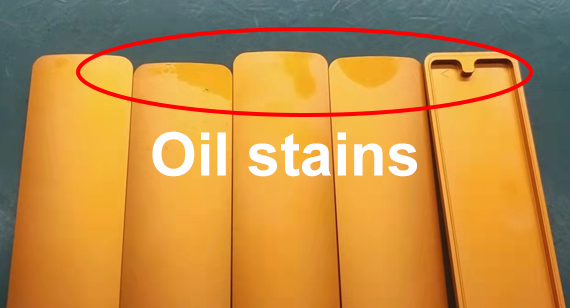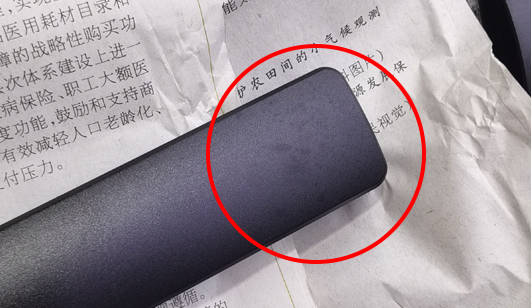15 years one-stop China custom CNC machining parts factory

Hey there I’m VMT Sam!
With 25 years of CNC machining experience we are committed to helping clients overcome 10000 complex part-processing challenges all to contribute to a better life through intelligent manufacturing. Contact us now
 172 |
Published by VMT at Dec 26 2023
172 |
Published by VMT at Dec 26 2023
CNC Machining Challenge: The Problem of Oil Stain Removal After Oxidation and Conductivity of Precision Machined Parts
In the field of precision CNC machining, it is crucial to ensure high precision and high quality of parts. However, in the actual production process, especially after precision machined parts undergo oxidation and conductive treatment, a thorny problem is often encountered - oil stains are difficult to completely remove. This article will delve into this issue, analyze the reasons why oil stains are difficult to remove, and propose corresponding solutions.
1. CNC Machining and Precision Machining Parts
CNC machining is a method of processing by controlling machine tools through computer programming. It has the advantages of high precision, high efficiency and high degree of automation. In CNC machining, precision machined parts refer to those parts that have strict requirements on dimensional accuracy, shape accuracy and surface quality. These parts are widely used in aerospace, medical equipment, electronic equipment and other fields, and their quality and performance directly affect the overall quality and service life of the product.

2. Oxidation Conductive Treatment and Oil Pollution Problems
In order to improve the corrosion resistance and electrical conductivity of precision machined parts, they are usually subjected to oxidation conductive treatment. However, during this process, a layer of oil is often attached to the surface of the parts that is difficult to remove. These oil stains not only affect the appearance and performance of parts, but may also have adverse effects on subsequent production processes.

3. Analysis of the Reasons Why Oil Pollution is Difficult to Remove
Oil contamination has complex components: The oil used in the oxidation conductive treatment process usually contains a variety of additives and impurities. These components form a complex oil film on the surface of the part, which is difficult to remove through simple cleaning methods.
Part surface characteristics: The surfaces of precision machined parts often have complex geometries and microstructures. These characteristics make it easier for oil stains to adhere and difficult to remove.
Improper cleaning methods: Although traditional cleaning methods such as solvent cleaning and ultrasonic cleaning can remove some oil stains, it is often difficult to achieve the ideal cleaning effect for precision machined parts after oxidation and conductive treatment.

4. Solutions and Suggestions
Improve the cleaning process: For precision machined parts after oxidation conductive treatment, a more efficient cleaning process needs to be developed. For example, advanced environmentally friendly cleaning agents can be used combined with high-temperature and high-pressure cleaning technology to more thoroughly remove oil stains.
Enhanced pretreatment: Before oxidation and conductive treatment, parts can be pretreated, such as using special surface treatment technology to reduce the adhesion of oil stains, thereby facilitating subsequent cleaning work.
Optimize the production process: From the perspective of the production process, try to reduce the oil contact of parts during processing. For example, improve the lubrication system of machine tools to reduce the amount and splash of lubricating oil; optimize machining process parameters to reduce the impact of cutting heat and cutting force on oil pollution, etc.
Introducing advanced technology: Learn from advanced technologies in other industries, such as plasma cleaning, laser cleaning, etc., to provide new solutions for oil stain removal on precision machined parts. These technologies have the advantages of non-contact, no pollution, and high efficiency, and are expected to become an effective means to solve oil pollution problems in the future.
5. Summary and Outlook
The problem of oil contamination after oxidation and conductivity of precision CNC machined parts has always been a problem that troubles producers. By analyzing the composition of oil stains, surface characteristics of parts and cleaning methods, we can find the crux of the problem and take appropriate measures to solve it. With the advancement of science and technology and the development of the industry, we have reason to believe that more efficient and environmentally friendly oil pollution removal technologies will emerge in the future, injecting new vitality into the development of the field of precision CNC machining.
Ready To Start Your Next Project?
Get Instant Quote

Request a Free Quote
Send us a message if you have any questions or request a quote. We will get back to you ASAP!